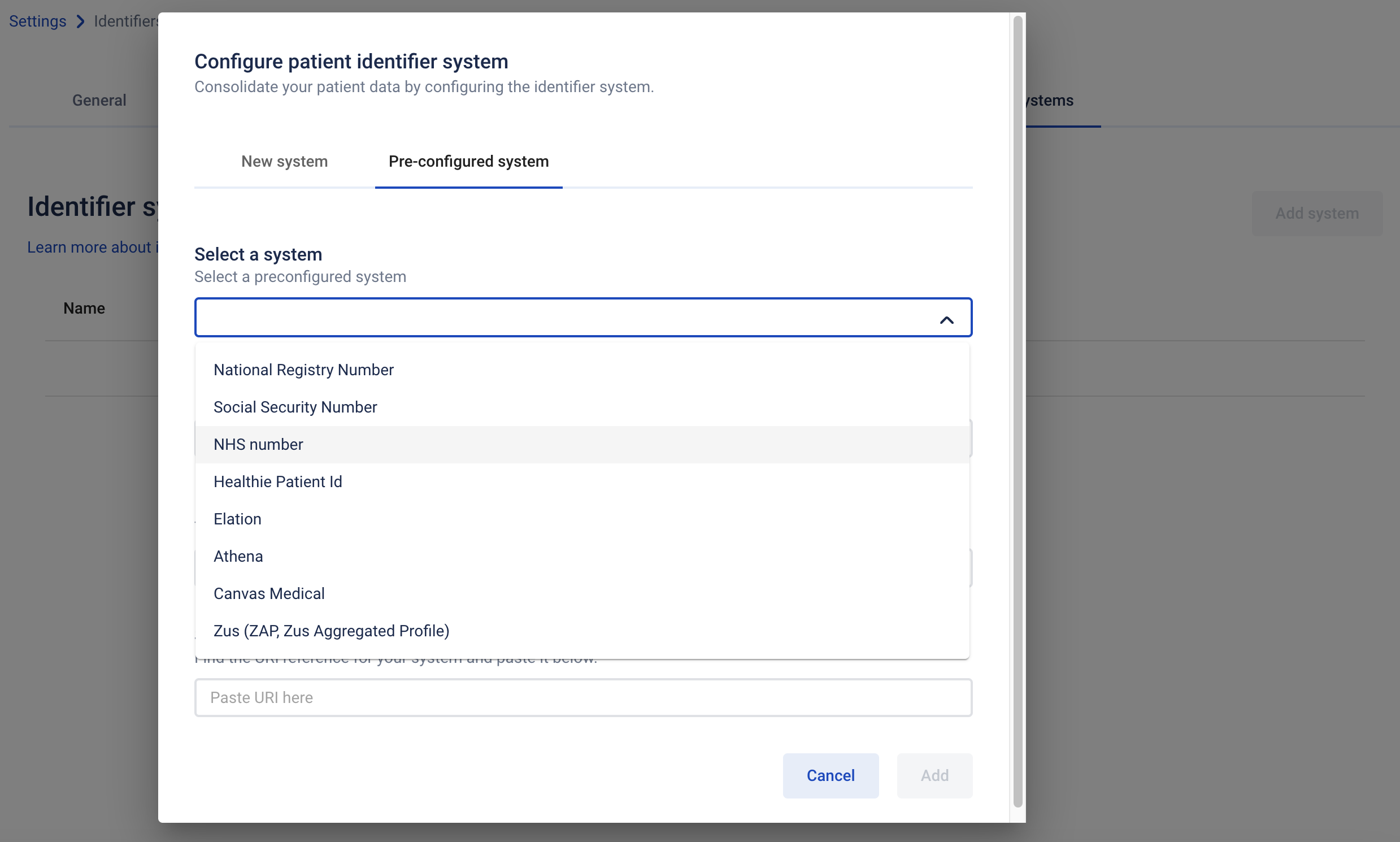Miscellaneous
Patient identifiers
What are patient identifiers and how to set them up
A patient represents a real-world entity that is documented across various systems, each assigning unique, portable identifiers to track the entity throughout these systems. These identifiers remain consistent, even as the entity's information is transferred or replicated in different locations. Many identifiers, such as Patient Medical Record Numbers (MRNs) and Provider Numbers, may be issued by external entities, including government agencies.
Due to the nature of distributed record-keeping, a single patient may accumulate numerous identifiers. Managing and reconciling these identifiers is a significant aspect of data management, highlighting the complexity and importance of maintaining accurate records across healthcare and other systems.
Identifiers at Awell
Awell adopted FHIR identifiers to solve this problem. FHIR anticipates this complexity by allowing each patient to have multiple identifiers (also referred to as "business identifiers").
Each identifier is defined by a system- value pair. As with CodeableConcepts, the system acts as namespace for the identifier, and must be specified as an absolute URL to ensure that it is globally unique.
Using the identifier system allows you to simplify your healthcare applications by consolidating data in a single patient, while allowing different systems to access the data by different ID schemes.
Example
The example Patient below has three identifiers: an SSN and two MRN identifiers from different hospital systems.
01
How to set up identifier systems in Awell
To assign identifiers to patients you first have to set up your identifiers in your organization via Awell's app. Identifier name and system must be unique.
- Go to Settings in Awell (CareOps app)
- Go to Identifier systems tab
- Click Add System
- Either create your system or select one of the pre-configured systems
- Click Add
Modal to add a new pre-configured identifier system
Assign identifier to the patient
Identifiers can be added to patients via multiple ways, depending on your use case:
- Via the Awell apps (Awell Care)
- API: see createPatient and updatePatient mutation
- Incoming webhook trigger
- Shareable Hosted Pages link
